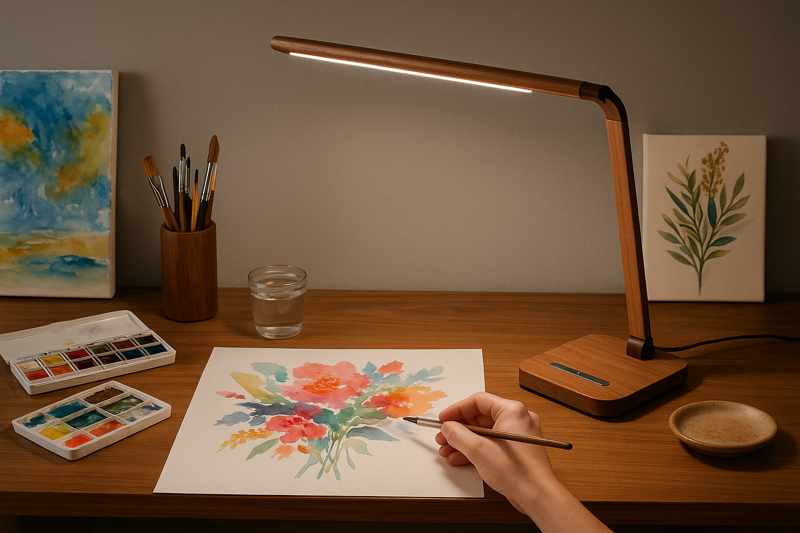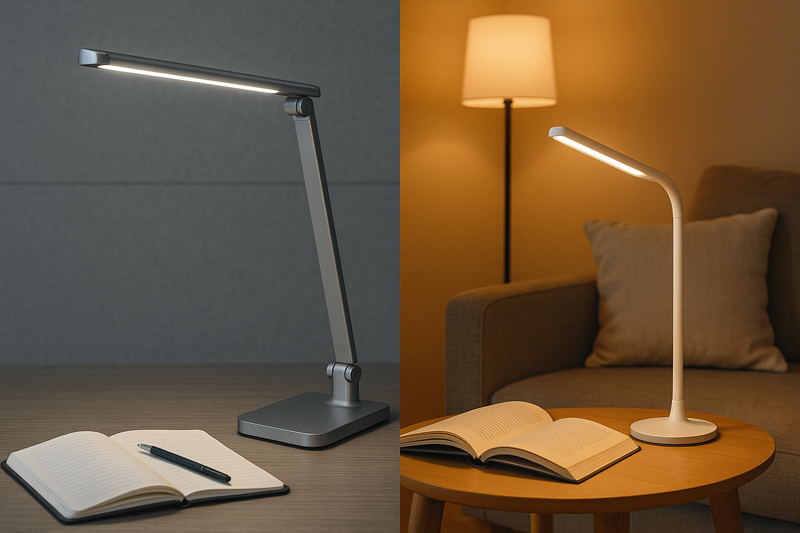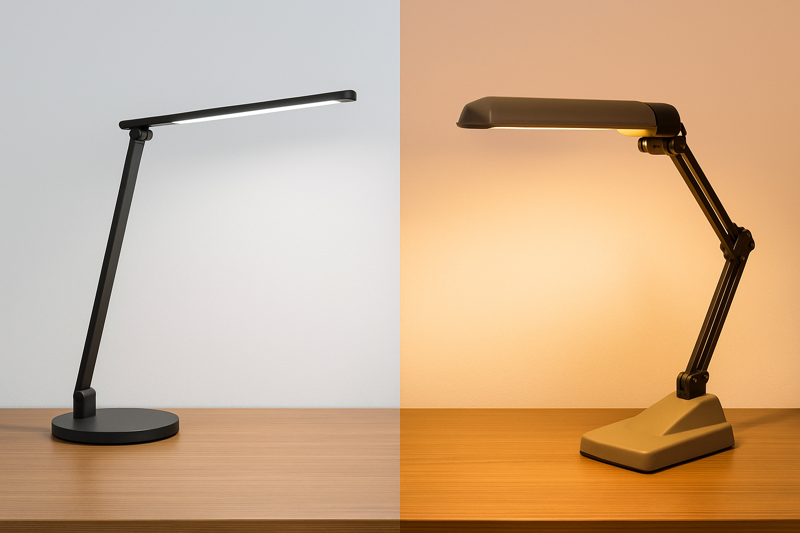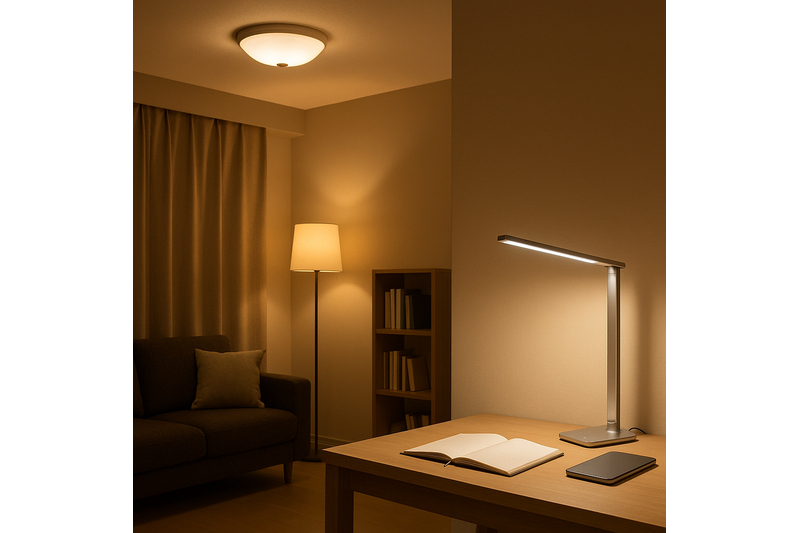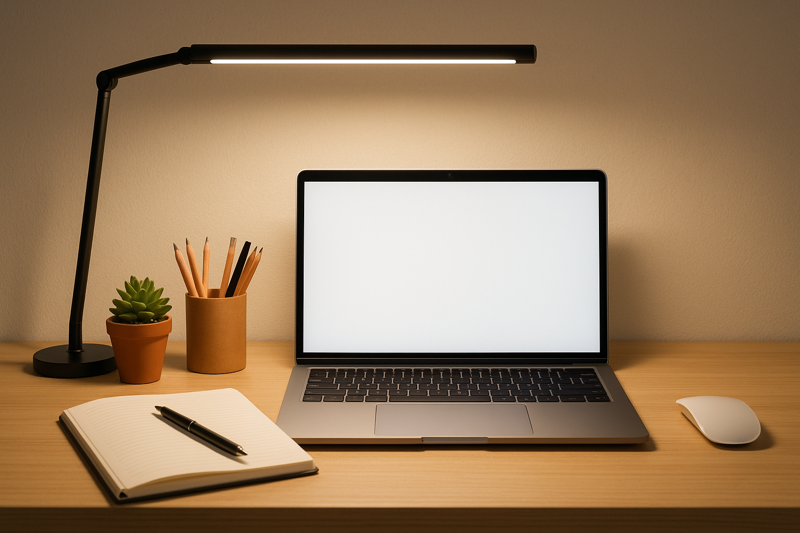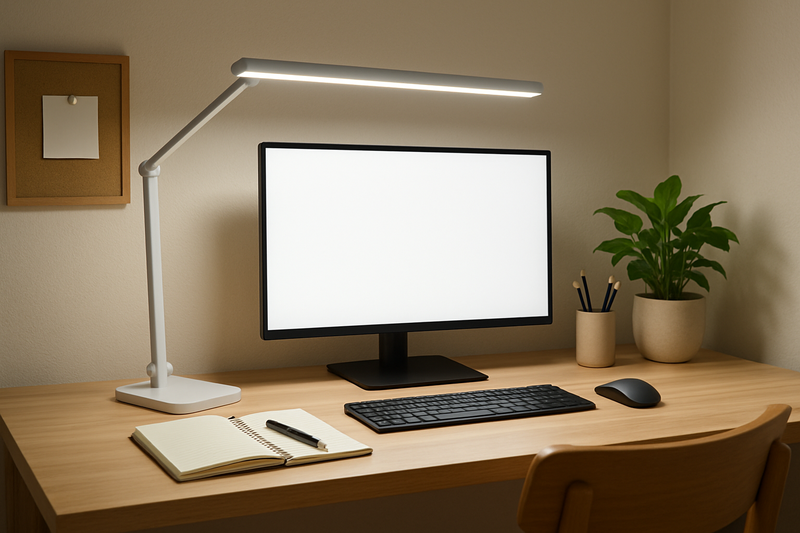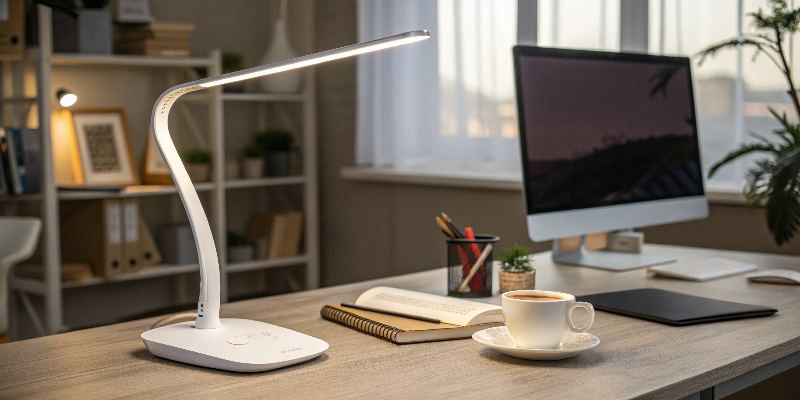
Problem: Poor lighting can reduce productivity and cause discomfort in a home office.
Agitation: Many struggle to find effective lighting solutions.
Solution: Explore practical ideas to create a well-lit, efficient workspace.
Good lighting enhances focus, reduces eye strain, and boosts productivity in a home office.
Find the perfect balance of brightness and style with these lighting ideas for your workspace.
What type of lighting is best for a home office?
Problem: Choosing the right lighting can be confusing with so many options.
Agitation: The wrong type of light can lead to fatigue and decreased productivity.
Solution: Focus on task lighting that complements your workspace needs.
Task lighting, such as desk lamps or under-cabinet lights, is ideal for focused work.
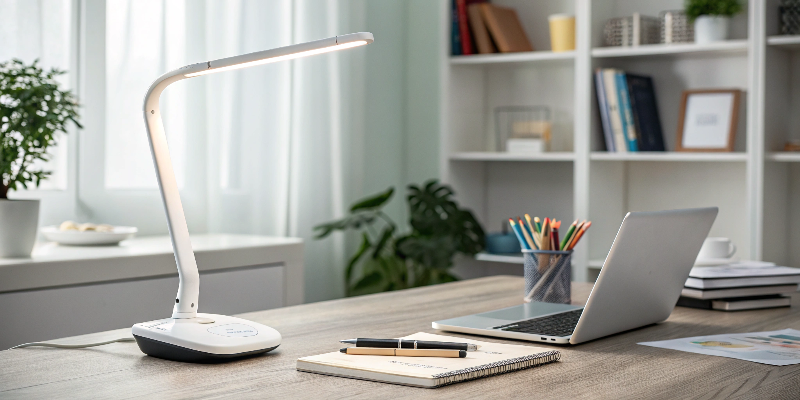
Exploring lighting options
Task lighting is essential for specific activities like reading or writing. It helps reduce glare and shadows. Additionally, natural light should be maximized whenever possible, as it enhances mood and concentration. Here's a breakdown of common lighting types:
| Lighting Type | Description | Benefits |
|---|---|---|
| Task Lighting | Focused light for specific tasks | Reduces eye strain |
| Ambient Lighting | Overall illumination of the room | Creates a comfortable atmosphere |
| Accent Lighting | Highlights specific areas or objects | Adds aesthetic appeal |
What lights should be in an office?
Problem: Many office setups lack the right combination of lights.
Agitation: Insufficient or overly bright lighting affects productivity and comfort.
Solution: Combine ambient, task, and accent lighting for a balanced setup.
A mix of ambient, task, and accent lights creates a functional and inviting office space.
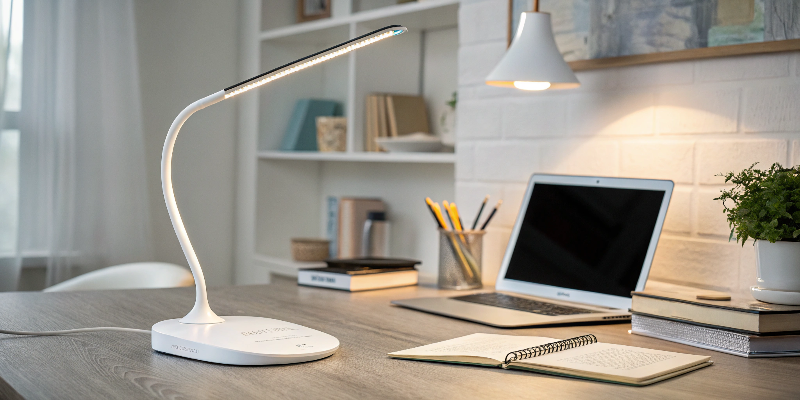
Layering lighting for functionality
To achieve optimal lighting in an office, consider these elements:
- Ceiling Lights: Provide overall illumination.
- Desk Lamps: Offer targeted lighting for tasks.
- Wall Sconces or Floor Lamps: Add decorative and supplementary light.
Position each light source to minimize glare and create even illumination across the workspace.
What is the best color for home office lighting?
Problem: The wrong lighting color can make a workspace feel unpleasant.
Agitation: Too warm or too cool lighting disrupts focus and comfort.
Solution: Opt for neutral white or daylight colors to enhance productivity.
A color temperature of 4000K–5000K provides a neutral white light ideal for focus.
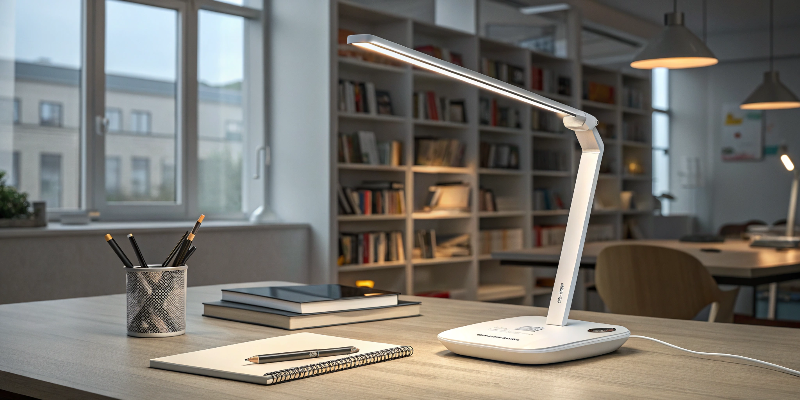
Understanding color temperature
Lighting color impacts mood and efficiency. Warmer lights (2700K–3000K) are cozy but may not be suitable for focus-intensive tasks. Cooler lights (5000K and above) are energizing but can feel harsh. Neutral white strikes a balance:
| Color Temperature (Kelvin) | Suitable For |
|---|---|
| 2700K–3000K | Relaxed environments |
| 4000K–5000K | Productive workspaces |
| 5000K+ | Industrial settings |
How to layer lighting in a home office?
Problem: Relying on a single light source can create uneven lighting.
Agitation: Poor lighting layering leads to shadows and eye fatigue.
Solution: Use a combination of lighting layers to achieve balance.
Layering ambient, task, and accent lighting ensures even, glare-free illumination.
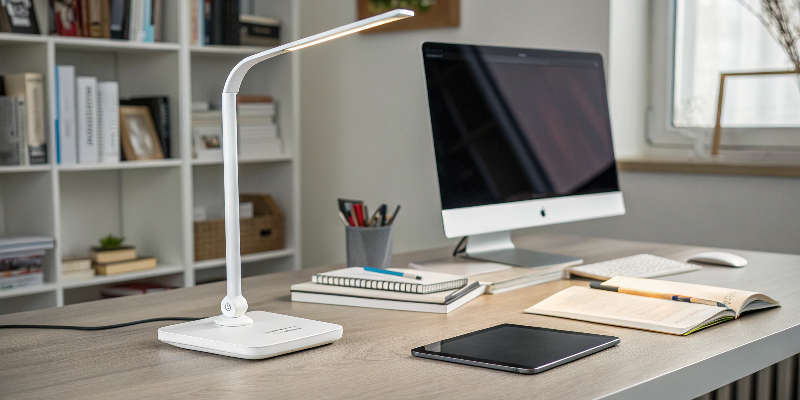
Steps to layer lighting
- Start with Ambient Lighting: Use ceiling lights or pendants for general illumination.
- Add Task Lighting: Place desk lamps or under-cabinet lights near work areas.
- Include Accent Lighting: Add floor lamps or LED strips for visual interest.
Experiment with adjustable fixtures to create a personalized and adaptable lighting environment.
What is the most common office lighting?
Problem: Many home offices rely on suboptimal lighting solutions.
Agitation: Common lighting setups often neglect comfort and functionality.
Solution: Fluorescent or LED lighting is commonly used due to efficiency and longevity.
LED lighting is the most common and efficient choice for home offices.
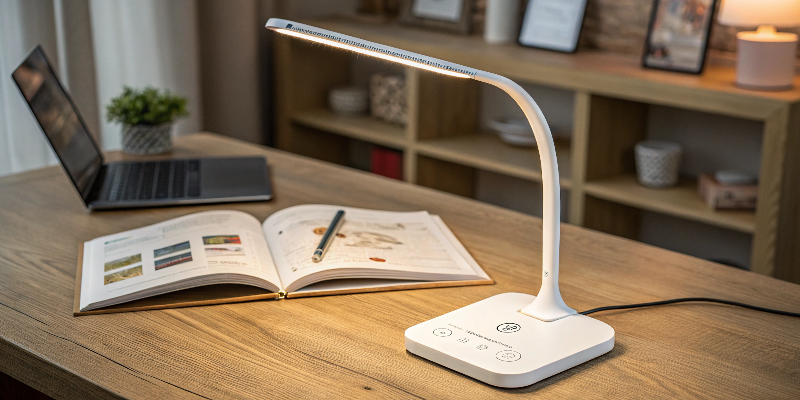
Why LED lighting dominates
LED lights are energy-efficient, durable, and versatile. They provide consistent illumination without flicker, making them ideal for extended work hours. Compared to traditional fluorescent lights, LEDs offer:
- Longer Lifespan: Up to 25,000 hours or more.
- Lower Energy Use: Up to 75% less energy consumption.
- Customizable Options: Dimmable and available in various colors.
Should a home office be bright or dark?
Problem: Striking the right brightness level can be challenging.
Agitation: A workspace that's too bright or dark can strain the eyes.
Solution: Aim for moderate brightness with adjustable lighting.
A home office should have adjustable brightness to suit different tasks and times of day.
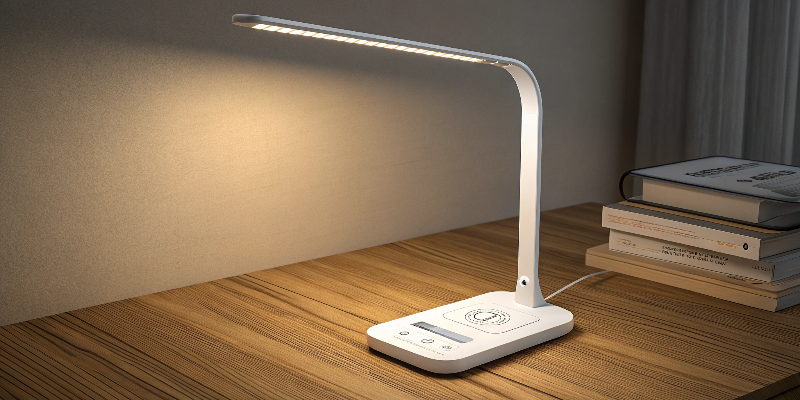
Finding the right brightness
Bright lighting helps with focus, but excessive brightness can cause glare. Dimmer lighting is relaxing but may hinder visibility. Use dimmable lights or smart bulbs to customize brightness levels. Position lights to avoid direct glare on screens and reflective surfaces.
Conclusion
Balanced, layered, and adjustable lighting creates an ideal home office. With the right combination of lights, you can enhance productivity, comfort, and style in your workspace.


